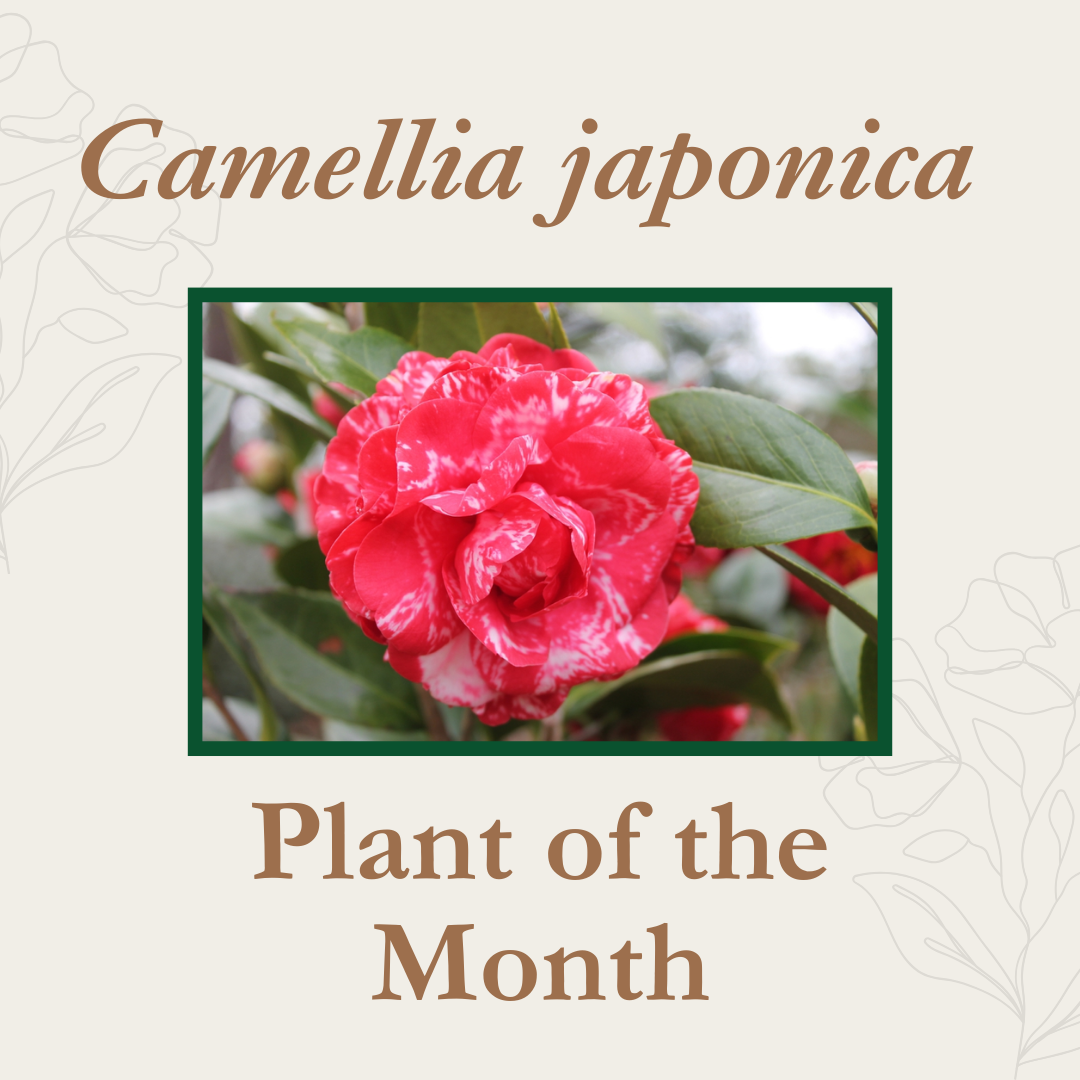|
Photo: ‘Magic City’ Camellia NHC Arboretum in Wilmington Camellia japonica Common names: Camellia, Common Camcellia, Japanese Camellia, Peony Camellia Japanese camellia is an evergreen woody shrub/small tree that is native to China, Korea, and parts of Japan. Camellia prefers shade to part-shade and well draining soils. They are slow to establish and grow but are long lived plants. Bloom colors range from white to red and all shades of pink. For more information on this and any plant you are curious about, check out the NC Extension Gardener Plant tool box!
0 Comments
AuthorBeth Stewart- Master Gardener Volunteer January is for gardening planning! It is a great time to decide what you would like to plant this year and what new flower beds, raised beds, or trellises are needed. January is also a great time to pursue seed catalogues and clean off your seed starting equipment. Getting your soil tested is a good idea this time of year to have time to make amendments before planting in the spring.
It is time to start stratifying perennial seeds that were collected last fall. This is helpful for seeds that have a dormancy period like native flowers. Stratification can be done by storing them in a wet paper towel inside a loose plastic bag and place it in the refrigerator for a few weeks. Start seeds inside for cool season crops such as broccoli, cauliflower, or onion. Later in January you could start warm season crops that have longer germination period such as rosemary or begonias. It is also a great time to give some attention to your indoor plants. Check them for infestation and set up a watering schedule. Caroline IngramMaster Gardener Volunteer Helleborus orientalisCommon names: Christmas rose, Hellebore, Lenten Rose
Bloom: Late winter Foliage: Evergreen in warmer climates Sun: Prefers shady areas The genus name, Helleborus, comes from the Greek words helein meaning injuries and bora meaning food referring to the toxicity of the plant if ingested. The Lenten rose is native to Asia and Eurasia. Often the first color we see in the new year, the Hellebore is a great addition to your garden borders to break up the gray of winter. With evergreen leaves, they can add interest all year long. Hellebore have a clumping habit and grow 1’-1.5’ tall and equally wide. To promote new foliage, cut back the flowering stems when blooming is complete. Hellebore can be propagated by seed but is most easily propagated by dividing clumps in the spring. If you are new to gardening, or just need a refresher, here are some basic seed starting tips!
The two most common ways to start seeds are by direct sowing and starting seeds indoors (in your home or a greenhouse). Starting seeds indoors requires more equipment and space but this can allow you to get a head start on your plants. Direct sowing only requires soil and a seed. Direct Sowing: Materials: Soil, water, and seed Seed packs will have instructions on how deep to plant and how far to space your seeds. These are general guidelines for best performance. Consistent moisture is important to encourage germination. Sowing Indoors for Transplant: Materials required: Soil designed for seed starting, seedling trays (can be DIY), heat source, light source, a way to ensure air circulation such as a small fan, water, and seeds. Fill your seed starting trays with moist soil. You know that the moisture level is right if you squeeze a handful of soil and it feels like a moist sponge. After seeds have been sown according to your seed pack instructions, the seedling tray will need to be covered to retain humidity until seeds have germinated. During this time you will also want your seeds on a heat mat or some other heat source to encourage germination. When 75% of the seeds in your tray have germinated, remove them from the heat source and apply a light source. This can be a grow light, sunny window, or in a space outdoors that is not in direct bright sunlight. When watering seedlings, it is important not to over/under water. Soil should be damp but not soggy. Watering from the bottom of the tray is best to prevent disease on your seedlings. When the seedlings have 3-4 true leaves, they are ready to be hardened off (slowly transitioned to outdoor conditions) and transplanted outdoors if you are outside of your frost window. When starting seeds indoors or in greenhouse for transplanting later to your garden, these are basic tips that can help ensure success!
Happy Growing! Succession planting is a method of planting vegetables, herbs, and flowers that will increase crop availability throughout the growing season. By making efficient use of space and timing you can ensure near continual harvesting of your favorite garden goodies. Some rapid growing vegetables like baby leafy greens and radishes can be succession planted every 7 days. Other vegetables with longer days to maturity such as cucumbers and melons can be direct sown every 21 days.
Some of the plants more amenable to succession planting are listed below: Beans Carrots Collards Corn Cucumbers Kale Leeks Lettuce Melons Mustard Greens Peas Spinach Squash Sunflowers Tomatoes Turnips Zinnias These are general recommendations based on Zone 7 gardening. Many seeds can be planted over a few weeks or months. What is listed here is the earliest recommended time to plant. For most seeds and transplants you can plant later than noted below. If a plant is listed more than once that means you can grow these twice in one year! It is recommended to direct sow seeds into your garden unless otherwise noted.
January Onion (from seed) Peas *If you have seeds that need to be cold stratified, now is the time to stratify* February Arugula Asparagus crowns Broccoli (transplants) Cabbage (transplants) Carrots Cauliflower (transplants) Celery (transplants) Cilantro Collard greens (transplants) Kale Kohlrabi Leek Lettuce Mustard greens Parsley Parsnips Potato (tubers) Radish Rutabaga Spinach Turnip **start tomato, pepper, and eggplant seeds indoors** March Artichoke (transplant) Beets Chinese cabbage Swiss chard Sweet corn Dill Fennel Boc choy Field peas/southern peas Sunflowers April Beans Eggplant (transplant) Melon Pumpkin Peppers (transplant) Tomatoes (transplant) Squash May Basil Okra Peanuts Sweet Potatoes June Carrots Celery (transplants) July Beets Brussels sprouts Cabbage Collard greens Fennel August Arugula Broccoli Chinese cabbage Cauliflower Chard Kale Kohlrabi Lettuce Mustard Greens Okra Onion Bok choy Parsnips Peas Radish Rutabaga Turnips September Cilantro October Garlic Shallots Perennial onion November/December Spring bulbs and corms |
|




